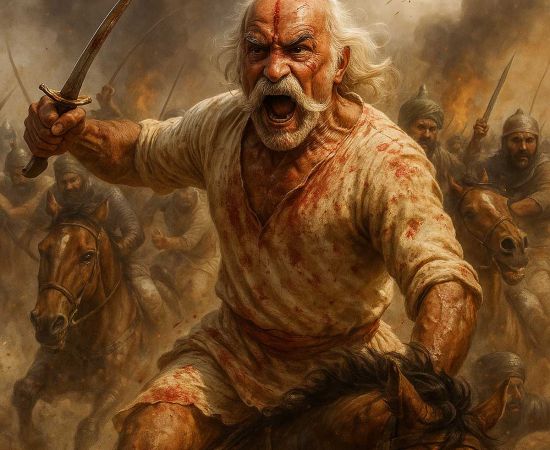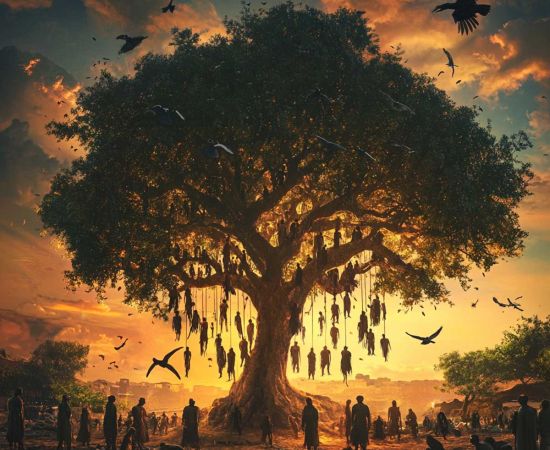MORE COVERAGE
Twitter Coverage
Satyaagrah
Written on
Satyaagrah
Written on
Satyaagrah
Written on
Satyaagrah
Written on
Satyaagrah
Written on
JOIN SATYAAGRAH SOCIAL MEDIA
‘Casteless Hindu’ is Not a Paradox. It is The keystone of ‘Ghar Wapsi’ and Hindutva
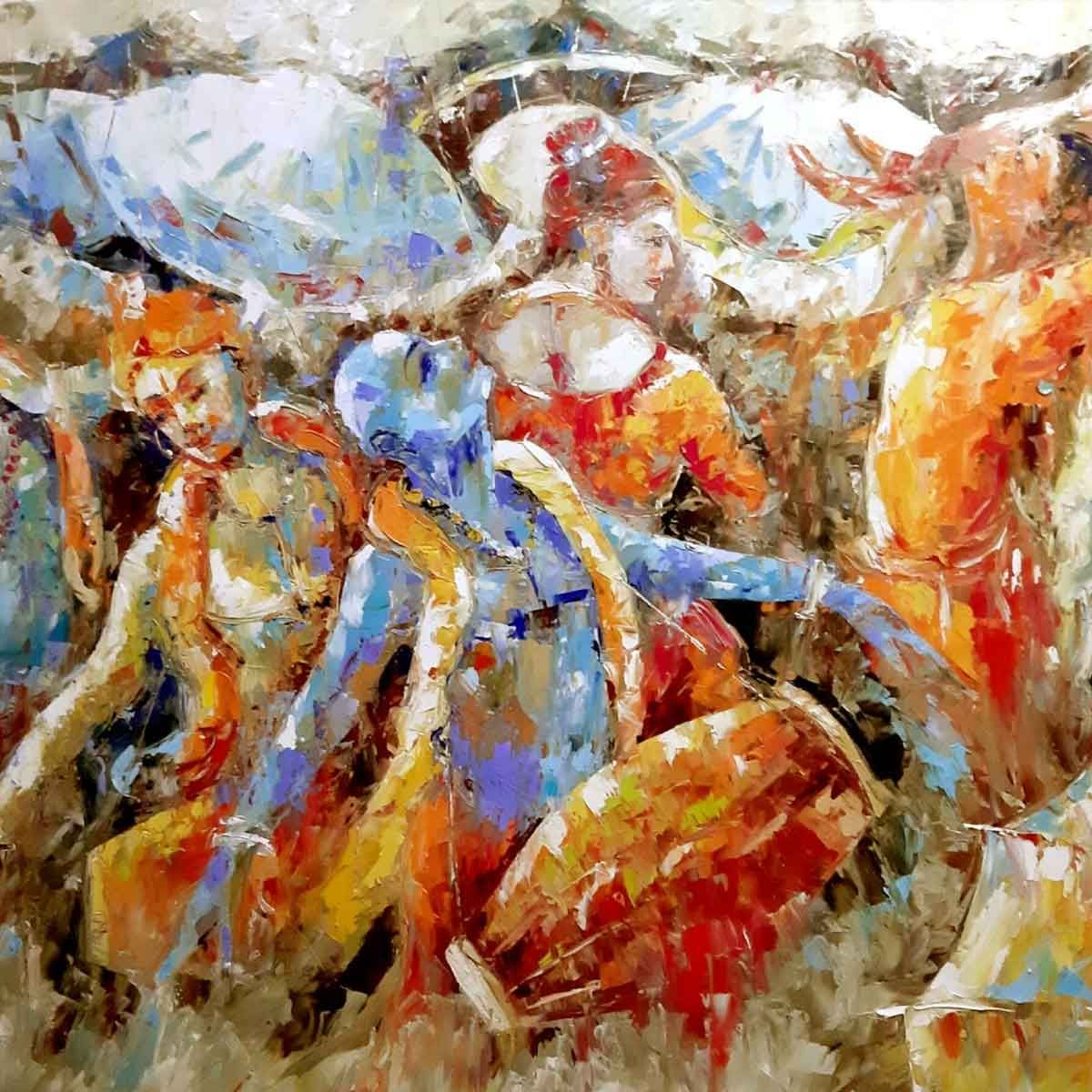
Whenever news of a ‘Ghar wapsi’ emerges, a question that many so-called secularists and “anti-Brahminical” voices ask is: Which caste will the converts enter?
A columnist for the news website The Print, in context of the recent ‘Ghar wapsi’ of former Uttar Pradesh Waqf Board chairman Waseem Rizvi, wrote: “This Ghar wapsi has posed a predicament for the Hindu religion. His becoming a Hindu can’t be as simple as converting to Islam or Christianity or Sikhism or Judaism. A Hindu must have a caste. ‘Casteless Hindu’ is an oxymoron, an impossibility.”
On Aaj Tak, news presenter Sayeed Ansari asked, “In Sanatana Dharma that believes a person is Hindu strictly by birth, can a Hindu convert a Muslim man? Does conversion to Hindu faith change one’s jaati?” (translated from Hindi).
On social media, many users question the validity and procedure for ‘Ghar wapsi’ and mockingly ask if organizers have figured out what jaati would the converts to Hindu fold be given.
A Twitter user from Pakistan, who routinely questions Pakistanis’ aversion to acknowledging their Hindu ancestry, too seemed clueless about the subject when he recently wrote, “…so it seems they came up with a process… btw, will gharwapsied Hindus be casteless? Or a new caste? (sic)”
What the commentators fail to understand and acknowledge is that the debate on jaati of anybody converting to the Hindu faith is an outdated one. It was relevant a hundred years ago. Today, it is hardly the case.
 Swami Dayanand Saraswati's contribution to the Indian Freedom Struggle is unparallel. He was a Profound Scholar who founded Arya Samaj |
Today’s ‘Ghar wapsi’ began as ‘Shuddhi’ more than a century ago
The modern-era ‘Ghar wapsi’ (literally means homecoming but alludes to “return” of Indian-origin Christians and Muslims to the Hindu fold) has its origins in the Shuddhi movement of the Arya Samaj, which was founded in 1875 by Swami Dayanand Saraswati.
From its very inception, the Arya Samaj was a vocal critic of the birth-based caste hierarchy.
Swami Dayanand advocated that it is against the original message of Vedas and a later aberration. In its initial days, the Arya Samaj worked towards raising the status of the untouchables and other lower castes through Hom (yagna), Yagnopavitha (investiture with the sacred thread), and recitation of Gayatri Mantra, which were, in most cases, denied to them by birth.
It took no more than two years for the organization to include Mohammedans and Christians in the Shuddhi mission.
In his 1915 book ‘The Arya Samaj’, Lala Lajpat Rai, who joined the movement in the early 1880s, wrote that Shuddhi means purification, but when used by Arya Samajists, it includes reclamation and conversion. He wrote:
“The Arya Samaj, being a Vedic church, and as such a Hindu organization, engages in the work of reclaiming those who have left Hindu society, and it converts everyone prepared to accept its religious teachings."
The first recorded instance of Shuddhi of a non-Hindu undertaken by Swami Dayanand was in 1877. There is, however, some dispute over the details.
While various Arya Samaj websites say the person was a Muslim from Dehradun, research work by Yale University scholar James Reid Graham says the person was a Christian from present-day Jalandhar (‘The Arya Samaj as a reformation in Hinduism with special reference to caste’, Yale University, 1945).
In any case, numerous works say that Arya Samaj magazines from the 1880s have several references of Muslim and Christian converts who were “purified” and “restored to their places in the Hindu society”.
The Punjab Census Report 1911, Volume XIV, authored by Pundit Harikishan Kaul, mentions a mass Shuddhi drive in Amritsar in 1884. Similarly, the United Provinces Census Report 1911 says that between 1907 and 1910, as many as 1,052 Musalman Rajputs were reconverted in a Shuddhi drive.
The principle of Shuddhi was soon adopted by other Hindu organizations such as the Hindu Mahasabha. Iconic leaders such as Pandit Madan Mohan Malviya and Lala Lajpat Rai were early members of the Mahasabha. Another icon, Vinayak Damodar Savarkar, emerged as its prominent leader in the 1920s.
 Vinayak Damodar Savarkar |
Savarkar’s 1931 essay titled Seven Shackles of the Hindu Society mentioned ‘Shuddhibandi’ (disallowing reconversions to Hindu faith) as one of the shackles besides prohibitions on inter-caste dining and inter-caste marriages. He wrote:
“Why should we not allow the enhancement of our (Hindu) numbers due to some antiquated idea that does not even have any scriptural sanction that we cannot convert to Hinduism?”
Around the same time in 1923, some Hindu activists came together to create Bhartiya Hindu Shuddhi Sabha. They elected Swami Shraddhanand as its president. The Sabha identified reconversion of ‘Malkana Rajputs’ in the western United Provinces as one of its key aims.
The Malkanas were Rajputs mainly living in Mathura, Agra, Etah, and Manipur. Despite conversion to Islam centuries ago, they continued to observe Hindu customs.
It is estimated that Shraddhanand managed to reconvert nearly 60,000 of them.
Today, the term in popular usage is not Shuddhi but ‘Ghar wapsi’.
It has been popularised by the Rashtriya Swayamsevak Sangh (RSS), which was set up in 1925 after one of the Hindu Mahasabha members, Keshav Baliram Hedgewar, left the organization to form a ‘Hindu volunteer organization abstained from active politics’.
The question of ‘Ghar wapsi’ and caste, more than 130 years later
In the 1920s, the concept of Shuddhi was adopted by several Hindu social organizations for the immediate goal of demography.
For a century now, active Hindutva organizations such as the RSS have been trying to create a singular Hindu identity against “Abrahamic religions” that is free from jaati and varna compulsions of the orthodox Chaturvarna system.
Perhaps the most noted among the RSS chiefs who campaigned against birth-based caste discrimination was Madhukar Dattatraya Deoras, popularly known as Balasaheb Deoras. He was the third sarsanghchalak of the RSS and remained so from 1973 to 1994.
Today, there indeed has emerged a Hindu identity largely free from jaati and varna compulsions. One only needs to read case studies on Shuddhi published in Arya Samaj magazines in the 1880s, of Hindus, excommunicated from their biradris, to understand the stronghold of the caste system at that time.
An 1885 edition narrates the case of a Hindu Rajput man and his Hindu wife, who “lost her caste” by “lodging with a Mussalman khansamah” and thus ceased to be in the Hindu fold.
An 1884 edition tells the story of a Hindu boy who “lost his caste” by taking bread from Mohammedans under the influence of ‘bhang’.
An 1886 edition narrates how Nathu Mal was excommunicated from his biradri for eating from the hands of a Mohammedan when he was sick.
The magazines said that the Arya Samaj managed to bring each of these outcasts back into the Hindu fold (all references quoted from Graham’s work).
Excommunications over such matters are unheard of in modern times.
The change has largely come about due to reform movements, government programs as well as natural changes in behaviors owing to technology as well as social and economic liberty.
In cities, one hardly hears of any case where a person “loses caste” or ceases to be Hindu for eating food prepared by a Muslim or “lower caste”.
People across castes and religions freely inter-mingle and inter-dine, barring exceptions. People eat out, caring little about who has prepared or served them food. Intercaste marriages are quite common.
An average Hindu city-dweller does not live as part of a biradri anymore. While jaati groups such as the Tyagi Sabha or Agarwal Samaj exist, he does not live in fear of ex-communication anymore.
The question then is, does a Hindu, especially one living in an urban town or city, necessarily need a jaati or varna to function in the society at all?
The answer is no.
This is why many of those who do ‘Ghar wapsi’ to the Hindu fold say it is their individual and personal decision, independent of their biradri. Read case studies on ‘Ghar wapsi’ in recent years reported here, here, and here.
One can offer a counter and say that during a Hindu conversion ritual, one must mention his gotra, and thus, a Hindu lineage is a must.
In reality, converts to the Hindu faith either mention the gotra of their ancestors or adopt the gotra of their guru or the person officiating the ‘Ghar wapsi’. Most Indians, including Hindu converts to Islam and Christianity, know the gotra of their ancestors. It’s a common observation that many Muslims, Christians, and Sikhs still use it as part of their name.
Priest Narsinghanand who officiated the ‘Ghar wapsi’ of Waseem Rizvi told the media that he has been given ‘Vatsa’ gotra. Vatsa is one of the dozen-odd gotras of the Tyagi jaati.
More than two weeks have passed since the ‘Ghar wapsi’ ceremony, but no Vatsa gotra or Tyagi jaati group has raised any objection.
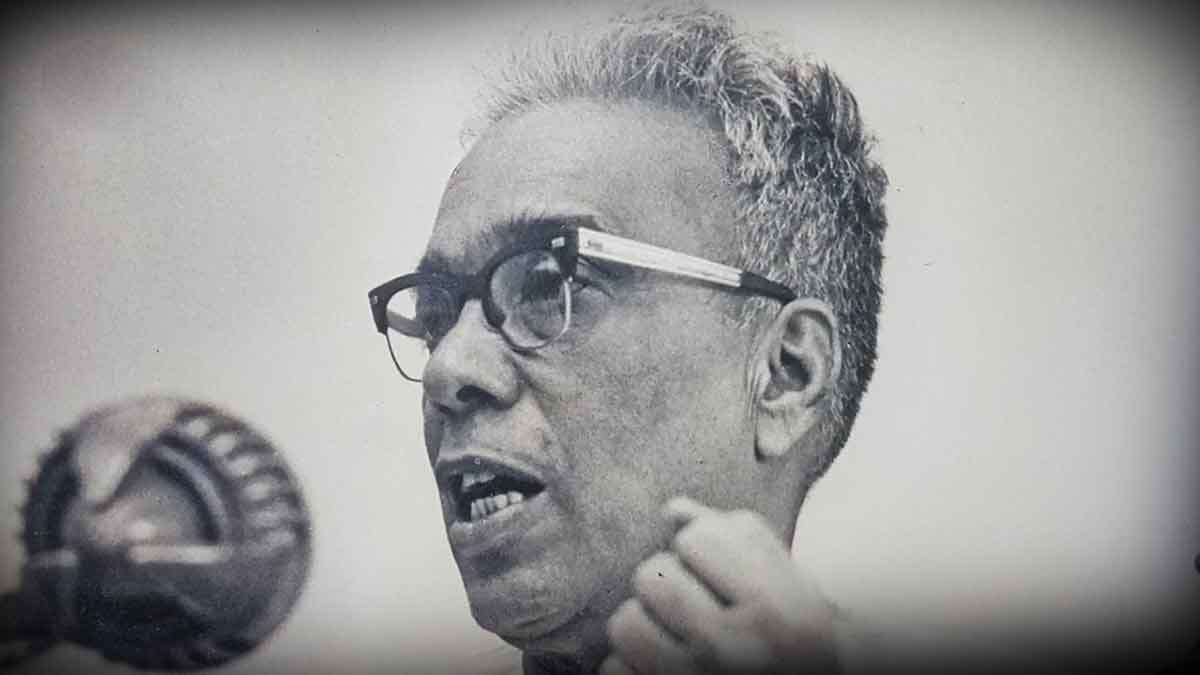 Madhukar Dattatraya Deoras, popularly known as Balasaheb Deoras |
Who is upset with ‘Ghar wapsi’?
One must now analyze who exactly is opposed to ‘Ghar wapsi’ and mocks the efforts by raking up orthodox theories that Hindus must have a jaati. For this, we should look at the critics of the original Shuddhi movement.
The first opposition came from orthodox groups and heads of various biradaris.
In 1895, a group of 15 Shuddhi activists from Moradabad was excommunicated from their biradari for accepting Ganges water from a Christian (reference from Graham’s work). The biradri forbade barbers and water carriers from serving them.
The next big opposition came from anti-Hindutva voices such as those in the Congress, which was pushing its highly controversial version of secularism, and from openly Islamist groups.
Swami Shraddhanand’s Shuddhi mission for reconverting Malkana Rajputs did not go down well with Mahatma Gandhi. In the 1922 issue of his magazine Young India, he criticized Swami Shraddhanand in an article titled 'Hindu-Muslim-Tensions: Causes and Resistance'. Gandhi wrote:
“Swami Shraddhananda has also become a character of disbelief. I know that his speeches are often provocative. Just as most Muslims think that every non-Muslim will one day convert to Islam, Shraddhananda also believes that every Muslim can be initiated into the Aryan religion. Shraddhananda Ji is fearless and brave. He alone has built a great Brahmacharya Ashram (Gurukul) in the holy Ganges. But they are in a hurry and it will move soon. He inherited it from the Aryan society."
Gandhi further accused Shuddhi pioneer Swami Dayanand of narrowing one of the most liberal and tolerant religions in the world.
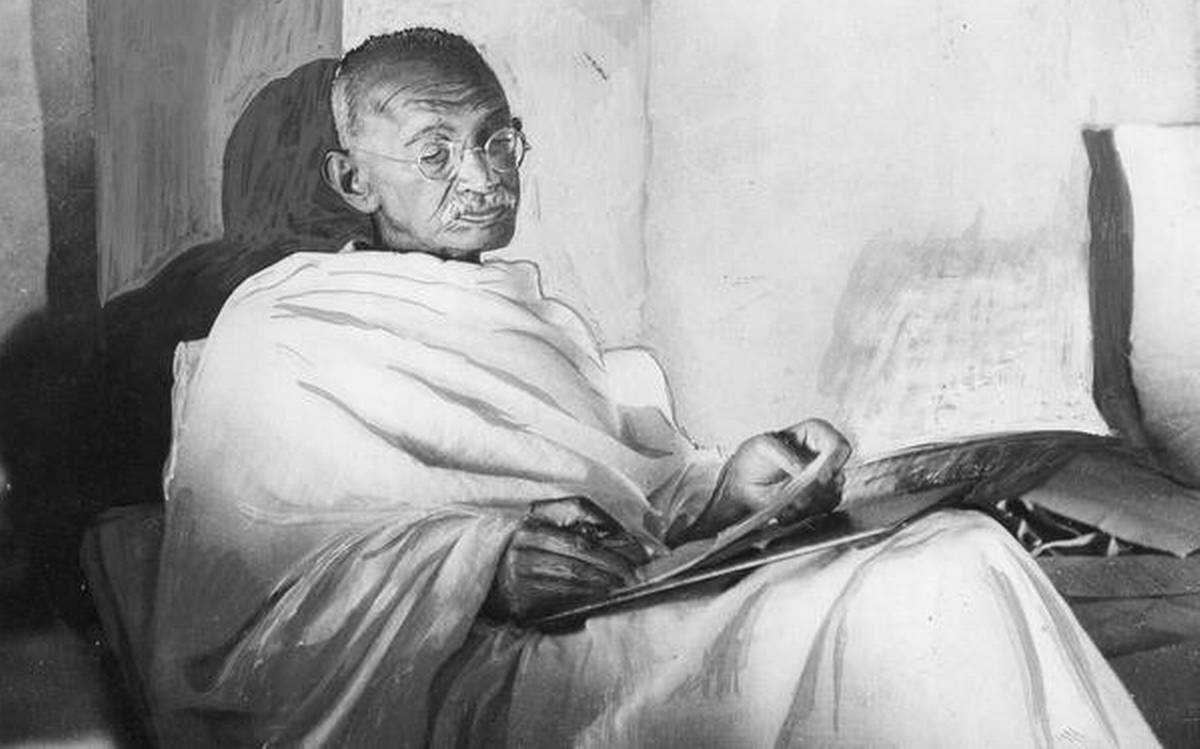 |
In the same vein, Jawaharlal Nehru made no kind mention of Arya Samaj for its Shuddhi movement in letters to his daughter Indira that were compiled in 1934 as a book called ‘Glimpses of World History.' Nehru wrote:
“Although it [Arya Samaj] was a reforming movement, influenced by no doubt by Muslims and Christians thought, it as in essence an aggressive militant movement. And so it happened, curiously, that the Arya Samaj which, of many Hindu sects, probably came nearest to Islam, became a rival and opponent of Islam. It was an attempt to convert defensive and static Hinduism into an aggressive missionary religion. It was meant to revive Hinduism. What gave the movement some strength was a coloring of nationalism. It was, indeed, Hindu nationalism raising its head.”
The third major opposition to Shraddhanand’s Shuddhi movement came from Islamist groups. A fanatic, Abdul Rashid, killed Shraddhanand on 23 December 1926 and confessed that he did it to save Islam in the wake of Hindu conversions of Malkana Rajputs.
Interestingly, it was BR Ambedkar, a proponent of total ‘annihilation of caste’, who openly supported Shraddhanand. Ambedkar, in fact, went so far as to call Shraddhanand “the greatest and the most sincere champion of The Untouchables”.
Ambedkar said so in his highly critical book ‘What Congress and Gandhi Have Done to the Untouchables’ that criticized Congress for abandoning their Dalit upliftment program.
Ambedkar also criticized Mahatma Gandhi for his failure to condemn the murder of Shraddhanand.
In his seminal 1945 work ‘Pakistan, or the Partition of India’, Ambedkar wrote:
“Mr. Gandhi has been very punctilious in the matter of condemning any and every act of violence and has forced the Congress, much against its will to condemn it. But Mr. Gandhi has never protested against such murders.”
It is pertinent to mention that another Shuddhi proponent, Swami Vedananda Tirtha, also earned the open praise of Ambedkar.
Vedananda authored a book, ‘Rashtraraksha ke Vedic Saadhan’ (Vedic Means for National Security), in which he proposed that India should adopt as its religion the gospel preached by the Vedas.
Ambedkar, who gave a preface for the book, wrote:
“I do not know that the book will become the gospel of new India. But I can say that the book is not merely a wonderful connection of statements drawn from the religious books of the ancient Aryans but it brings out in a striking manner the vigor of thought and action which prevailed among the ancient Aryans. What the book shows is that there is nothing in it of that pessimism among the ancient Aryans which dominates the modern Hindus.”
More than a century later, the modern-day Hindu conversion efforts continue to be criticized by the same groups even though one can determinedly say that orthodox groups have today been relegated to a fringe.
The organizations and individuals that these groups label as “Hindutva forces” are exactly those that have been vociferously pushing for social reform by rejecting caste orthodoxy. They are the ones leading the Shuddhi - now known as ‘Ghar wapsi’ - efforts for 130 years.
The very foundation of ‘Ghar wapsi’ is a rejection of caste orthodoxy. Ironically, the Congress, whose latest campaign is to differentiate between “Hindu” and “Hindutva”, is the party that Ambedkar consistently criticized for sidelining the work towards social equality.
Anybody deriding the efforts by asking ‘which caste will the converts get’ is either ignorant of the realities of the Hindu society today or represents the same forces that Ambedkar was so critical of.
References:
 Support Us
Support Us
Satyagraha was born from the heart of our land, with an undying aim to unveil the true essence of Bharat. It seeks to illuminate the hidden tales of our valiant freedom fighters and the rich chronicles that haven't yet sung their complete melody in the mainstream.
While platforms like NDTV and 'The Wire' effortlessly garner funds under the banner of safeguarding democracy, we at Satyagraha walk a different path. Our strength and resonance come from you. In this journey to weave a stronger Bharat, every little contribution amplifies our voice. Let's come together, contribute as you can, and champion the true spirit of our nation.
 |  |  |
| ICICI Bank of Satyaagrah | Razorpay Bank of Satyaagrah | PayPal Bank of Satyaagrah - For International Payments |
If all above doesn't work, then try the LINK below:
Please share the article on other platforms
DISCLAIMER: The author is solely responsible for the views expressed in this article. The author carries the responsibility for citing and/or licensing of images utilized within the text. The website also frequently uses non-commercial images for representational purposes only in line with the article. We are not responsible for the authenticity of such images. If some images have a copyright issue, we request the person/entity to contact us at This email address is being protected from spambots. You need JavaScript enabled to view it. and we will take the necessary actions to resolve the issue.
Related Articles
- While Shaheen Bagh showcases its latest artwork for anti-CAA 'protest', it also reveals its true nature of Islamist supremacy and Hinduphobia: Adds image of Hindu Swastika being ‘smashed’ and disintegrating
- Devkinandan Thakur's statement is a slap in the face of the Islamist hoodlum from Hyderabad - “Many more Yogis and Modis standing in line…”
- To be on the wrong side of history is a choice – How 21st-century invaders are capturing Chhatrapati Shivaji’s forts the way even Mughals didn’t and attempting to reclaim an invader identity unapologetically
- The true face of Saba Naqvi: How the ‘secular journalist’ supported Muslims acts of violence and fanaticism on Ram Sevaks in Sabarmati Express burning leading to gruesome killing of some 59 innocent people, including 25 women and 15 children
- Busting the myth of “glories” of the Mughal Empire and its economic superiority as fantasized by Indian Marxist and Liberal historians
- Why authorities ignoring conspiracy of Sexual objectification of Hindu women: #Hslut4Mstud Users on Reddit, Twitter and Tumblr are targeting Hindu women with pornographic content ‘for Muslim studs’
- Just a few months before the raging Hijab controversy, Muslim residents of Udupi had boycotted local fishermen for participating in a mega Padayatra to protest against illegal theft and slaughter of cows
- Girl students wear saffron shawls, chant Jai Shri Ram to protest against hijab in Karnataka: What Ambedkar meant about Women in Islamic Veil by saying, ‘One of the most hideous sights one can witness in India’
- Secularism ideology of India views and appeases Indian Muslims As Pakistanis
- Tales of Fraud, funding, forced religious conversion and insulting Hindu gods and goddesses after brainwashing: How tribals were converted to Islam in Gujrat - “Aapka paigam London pahucha diya hai, achha kaam ho raha hai"
- Hitler’s propaganda minister Joseph Goebbels said 'Repeat a lie often enough and it becomes the truth' - Whitewashing a genocide – how the exodus of Kashmiri Pandits is being blamed on Hindus instead of on Islamists
- Snappy wisecrack of Rahul Gandhi on ‘Hindu vs Hindutva’ and his frequent trips to temples and other confusing steps
- Embedded Hindumisia attitude of IndiaSpend is exposed further due to their faulty 'Hate Tracker' trying to show they are 'Neutral'
- Mohammedan needs to 'take back Babri Masjid', ISIS magazine states that Hindus are ‘filthy urine drinkers’ who learned civilized living from Muslims
- Islamic revivalist movements in Bharat and Deoband’s link to Taliban





















